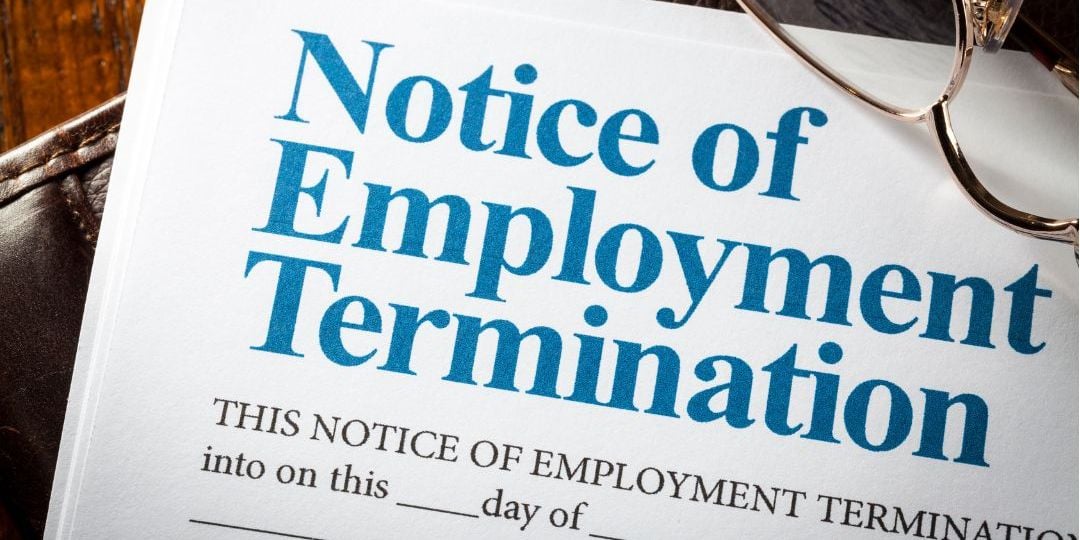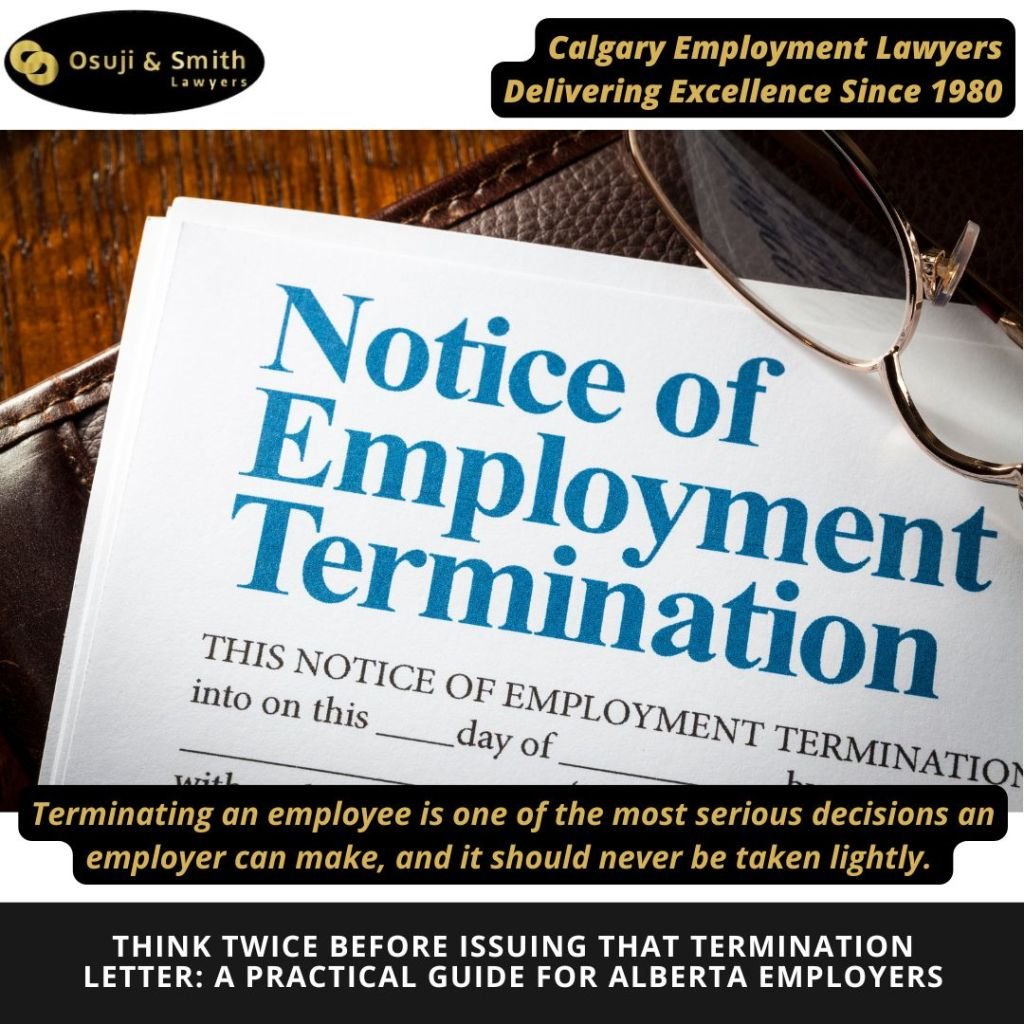
Think Twice Before Issuing That Termination Letter: A Practical Guide for Alberta Employers
Terminating an employee is one of the most serious decisions an employer can make, and it should never be taken lightly. All too often, I’ve seen termination decisions driven by personal grievances rather than legitimate business needs, which can result in costly legal complications and reputational damage. In Alberta, employers have the right to terminate employees without cause, as long as they offer appropriate notice or compensation in lieu of notice. However, when considering termination for cause, it’s crucial to ensure that every step is carefully thought through and justified.
This guide outlines a thoughtful and lawful approach to employee termination, helping employers navigate the process while minimizing risks and ensuring compliance with Alberta’s employment laws.

1. Document Performance Issues Thoroughly
Before considering termination, it’s essential to have a clear and objective record of the employee’s performance issues. Ensure that all concerns are documented, including performance reviews, written warnings, and any discussions regarding the employee’s behavior or performance. This documentation should reflect the actual impact on the business and be based on factual evidence rather than personal opinions. A well-documented history of performance issues is critical in protecting your company in the event of a legal challenge.
2. Offer Warnings and Opportunities for Improvement
Progressive discipline is the key process here. It’s important to give employees the chance to improve before deciding on termination. Provide written warnings about the issues at hand, along with clear expectations and specific timeframes for improvement. This demonstrates a reasonable, fair approach and shows that you’ve made efforts to help the employees address their shortcomings before resorting to termination.
3. Ensure Fair and Consistent Treatment
Fairness is key in any termination process. Ensure that you treat the employee consistently with others in similar situations. If an employee feels they’ve been treated unfairly or discriminated against, this can lead to claims of wrongful termination. It’s important to apply your company’s policies and procedures consistently to all employees to avoid any perception of bias or favoritism.
4. Avoid Discriminatory Grounds
Terminations based on protected grounds such as race, gender, age, disability, or other factors prohibited by Alberta’s Human Rights Act can lead to serious legal repercussions. If termination could be perceived as discriminatory, the employer must be able to demonstrate that the decision is based on objective, business-related reasons. In some cases, employers can justify a termination based on a bona fide occupational requirement (BFOR)—an essential job qualification that is rationally connected to job performance and necessary for the role. For example, physical fitness requirements may be justifiable for positions in hazardous work environments, like field operators in remote oil and gas operations.
5. Provide Reasonable Accommodation
Under Alberta law, employers must accommodate employees facing challenges related to protected grounds (e.g., disability) up to the point of undue hardship. This may include modifying job duties, offering flexible work arrangements, or providing temporary leave. Making reasonable efforts to accommodate employees demonstrates a commitment to supporting their needs and can help reduce the risk of discrimination claims.
6. Offer Support and Counseling
Consider offering additional support, such as counseling or training, to help the employees improve their performance. This not only shows that you’ve made reasonable efforts to assist the employees, but it also provides them with an opportunity to succeed before making the decision to terminate. A supportive approach can often resolve performance issues without resorting to dismissal.
7. Ensure Compliance with Alberta Employment Laws
Alberta’s Employment Standards Code outlines the legal framework for employment and termination. When terminating an employee, ensure that you comply with the statutory requirements for notice or pay in lieu of notice. The length of notice required depends on the employee’s length of service and job position. For employees with over 90 days of continuous service, the minimum statutory notice periods range from one week for those with less than two years of service to eight weeks for those with ten or more years. Be aware of additional obligations, such as those related to group terminations or specific terms outlined in employment contracts.
8. Offer Severance and a Respectful Exit
In some cases, offering severance pay and supporting the employee during their transition can help maintain a positive relationship and reduce the risk of legal action. A respectable exit process, where employees are treated fairly and with dignity, can also protect your company’s reputation. Providing severance and assistance with job searches, if applicable, ensures the employee has the support they need as they move on.
Key Takeaway:
Termination should always be a last resort. By approaching the decision with care, ensuring transparency, and following a lawful, fair process, employers can minimize the risk of backlash and avoid potential legal complications. A thoughtful and reasonable approach will help protect both the employee’s rights and the employer’s business interest, ensuring a smoother and more respectful resolution for all parties involved.
Understandably, navigating these benchmarks and ensuring that you have integrated policy guidelines, employment contracts, and onboarding documentation for your existing and in-coming employees can be challenging. Here at Osuji & Smith, we have experienced corporate, litigation and employment lawyers to assist you deal with these. We’re just a phone call away.
Author: Shikha Shukla

